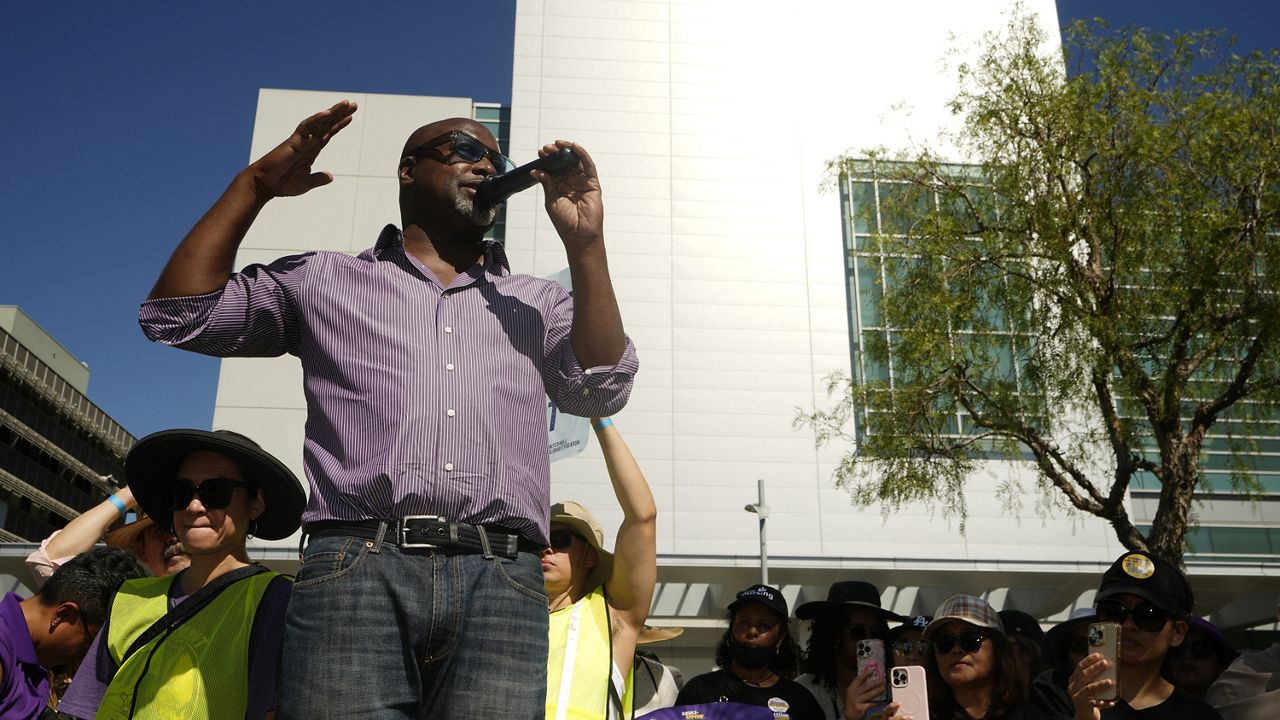LOS ANGELES — For Robert Johnson, it all started with sharp knee pain that simply wouldn’t go away, but he says doctors downplayed it for years until it ultimately grew into a massive tumor.
He eventually got a diagnosis nobody wants to hear.
“I got scared because cancer is one of the scariest words ever, just because I didn’t know how bad it was,” Johnson said.
A biopsy revealed bone cancer in his right leg. His doctors recommended amputation above the knee, so the cancer wouldn’t spread. Johnson was hesitant at first, but at the time, his wife was pregnant.
“I had to think of her and my family first, so I did this so that way I can be here still,” he said.
He was originally given a traditional socket prosthesis, but he often had painful skin irritation and infections.
“If I wore my sock for a long time, my thigh would shrink and then if I wouldn’t wear my leg so often, it would go back to its normal state and so, eventually, the socket would just not fit me,” Johnson said.
He couldn’t work, exercise, or even pick up his daughter, worried he would fall and drop her. That’s when he found Dr. Lawrence Menendez at Keck Medicine of USC.
“I think it’s going to revolutionize prosthetic management,” Menendez said.
He’s one of only a few orthopedic surgeons in the country extensively trained to perform a procedure known as osseointegration. It permanently anchors an artificial limb straight into the bone using a metal implant.
“These patients can wear the prosthesis all day. There’s no socket they have to deal with. They have no skin problems because of the socket,” Menendez said.
Johnson can attach it in a matter of seconds, and it also helps him become more aware of the position and movement of his body — a concept known as proprioception.
“When I stand, I can feel when I’m on the floor,” Johnson said. “It’s like I actually have a leg all over again.”
Johnson showed how he can cross his legs.
“If I’m sitting down playing with my daughter, I can just sit like this, and we can play and do whatever.”
Johnson says he can also walk for 45 minutes and not get as tired. The prosthetic limb itself is fairly high tech and connects to his phone via Bluetooth, allowing him to make various adjustments, depending on the activity.
“If I’m running, it knows to bend faster. If I’m walking slow, it knows to bend slow,” Johnson said.
“You can see examples of bilateral, above-knee amputees walking backwards and up and down hills, and that just isn’t possible with normal socket prosthetics,” Menendez said.
By eliminating the need for a socket, the procedure redefines what’s possible for amputees like Johnson, who can now get back to savoring the small moments that matter most.











